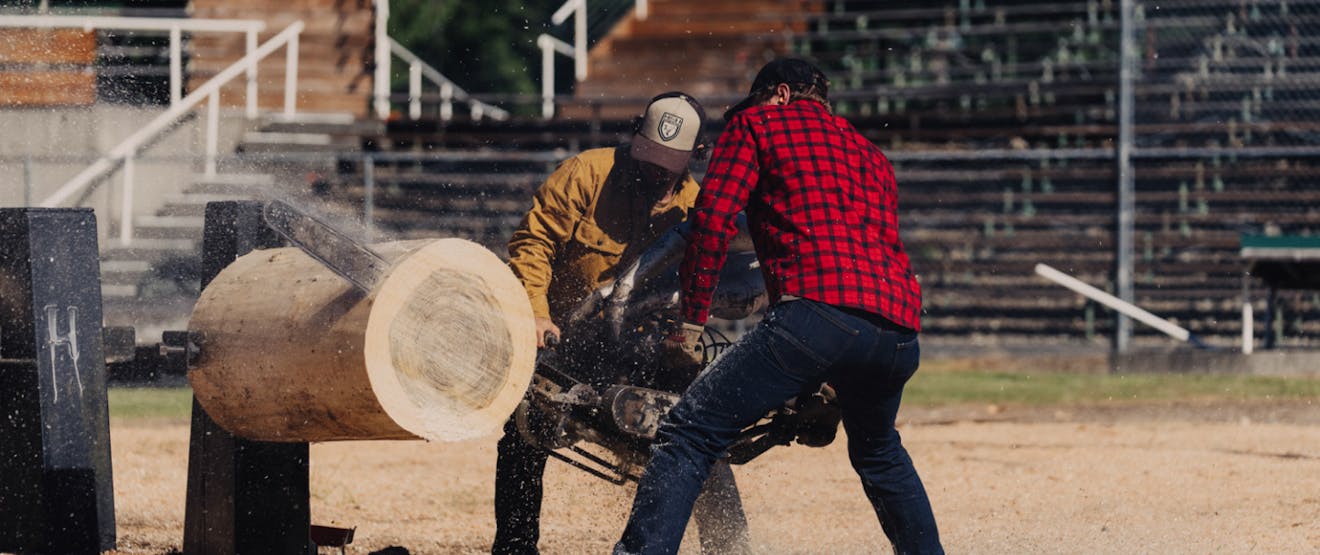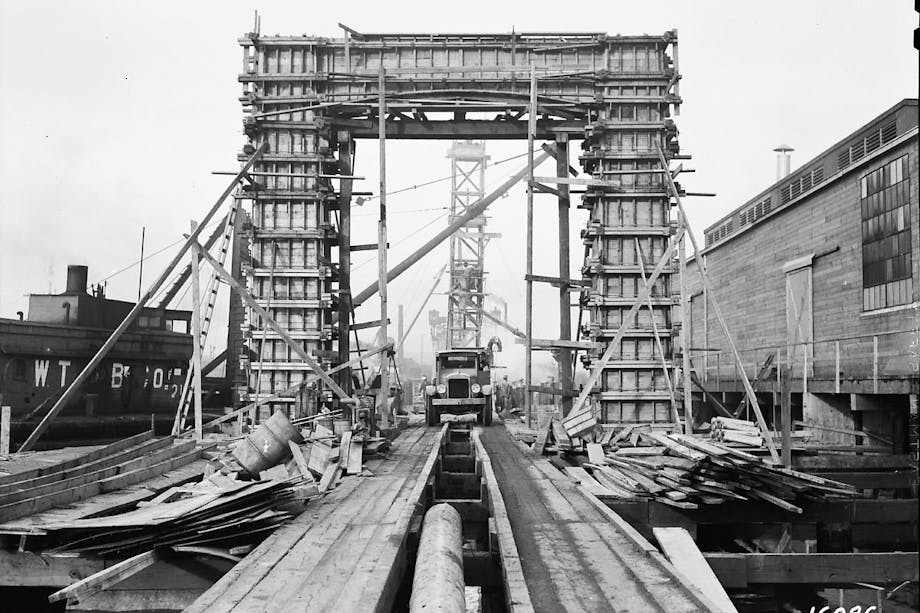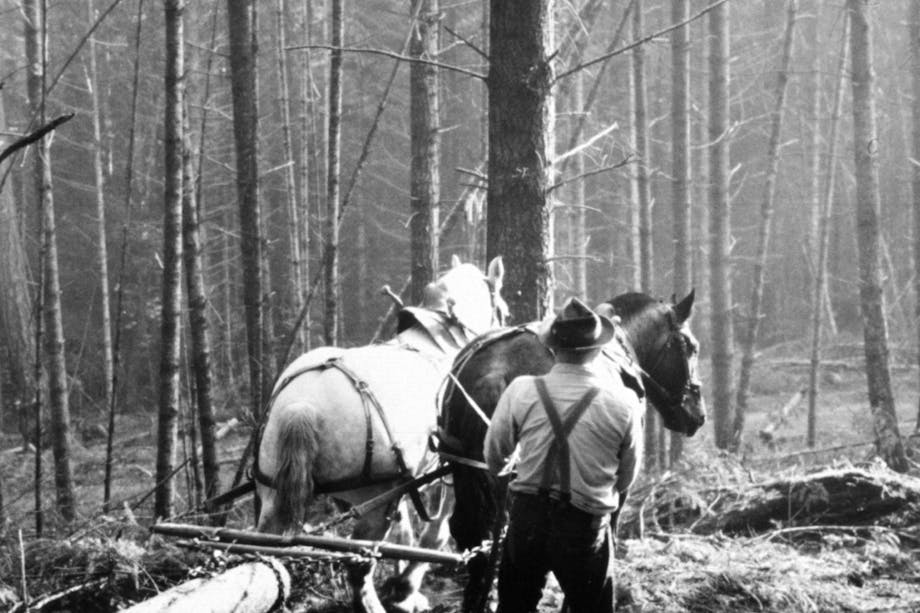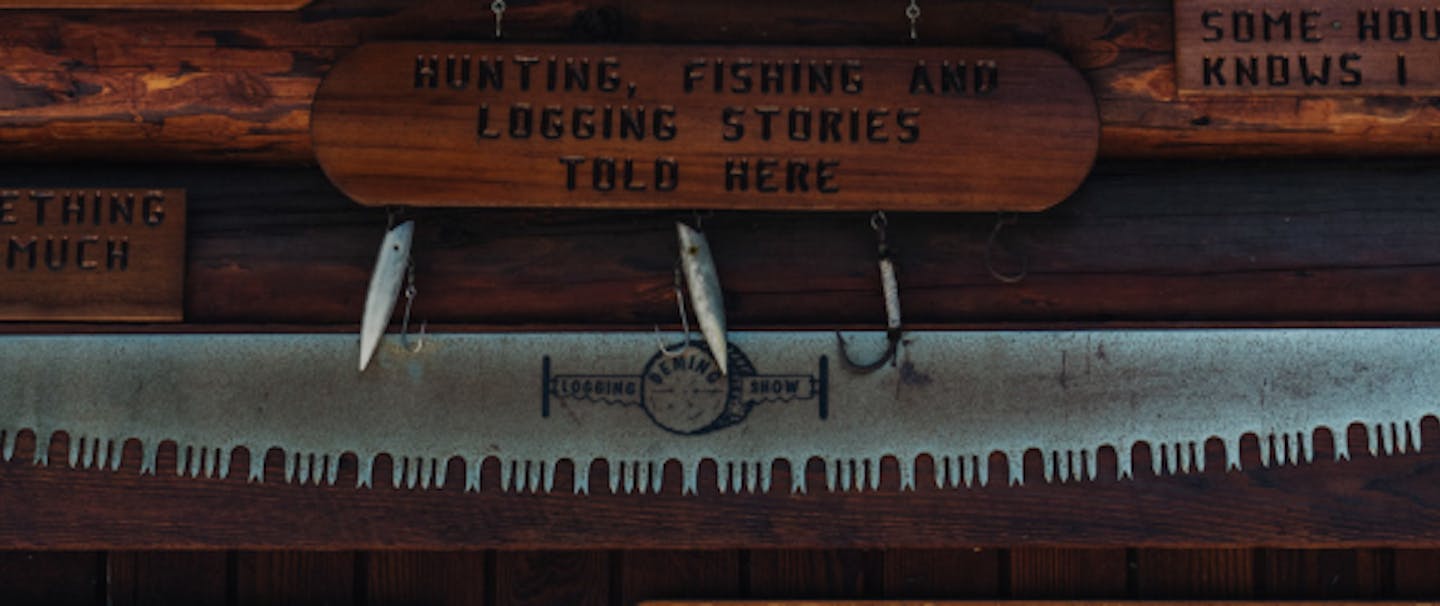The legend of Paul Bunyan was born from thousands of different voices, each one passing on a tale they had heard of a mythical lumberjack doing incredible things. He was the hero to the hardened men of the countless logging camps spread across North America in the latter part of the nineteenth century. Each retelling of his story slightly expanded his myth, added another embellishment, as oral storytelling is apt to do.
It wasn’t until 1916 that he managed to leave the logging camps and begin his walk across the continent, where each step he took grew more prominent and his exploits more gargantuan. That was when William Laughead latched onto his legend and used him in an ad campaign for Red River Lumber in Wisconsin. The public was fascinated by the broad-shouldered plaid-clad lumberman with a laugh that echoed across states, and his loyal blue ox Babe, whom they read about in illustrated booklets.
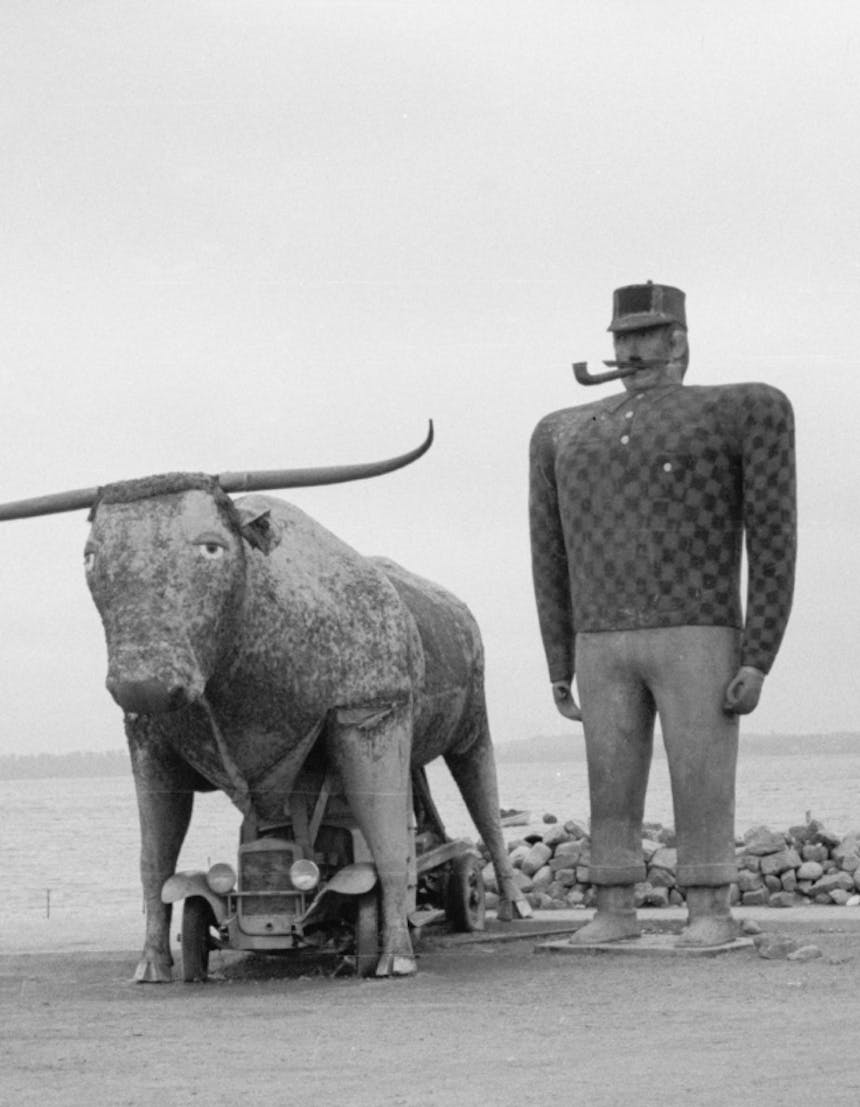
“The Grand Canyon was formed when he dragged his ax behind him while walking. The 10,000 lakes in Minnesota result from water filling in his mighty footsteps after he had passed.”
One legend has it that he was modeled after an actual individual, French-Canadian lumberjack Fabian “Saginaw Joe” Fournier. Towering over other loggers at six foot tall, he served in logging camps in Michigan, Minnesota, and Wisconsin after the Civil War and cut a wide swath. When he died in 1875 at the age of 30 after being struck on the back of the head with a mallet during a brawl, the stories around him only grew. Another legend has it that he was based on the character Paul Bon Jean of French-Canadian folklore.
Whatever the origins, his story instantly struck a chord with the public and rapidly grew. Many of the stories had roots in ancient wilderness folklore. His legend, much like his height, shot towards the sky like a sapling in the spring. It was told and retold to new generations of children by parents and grandparents—the tale of the man who could tame the wilderness and perform the impossible.

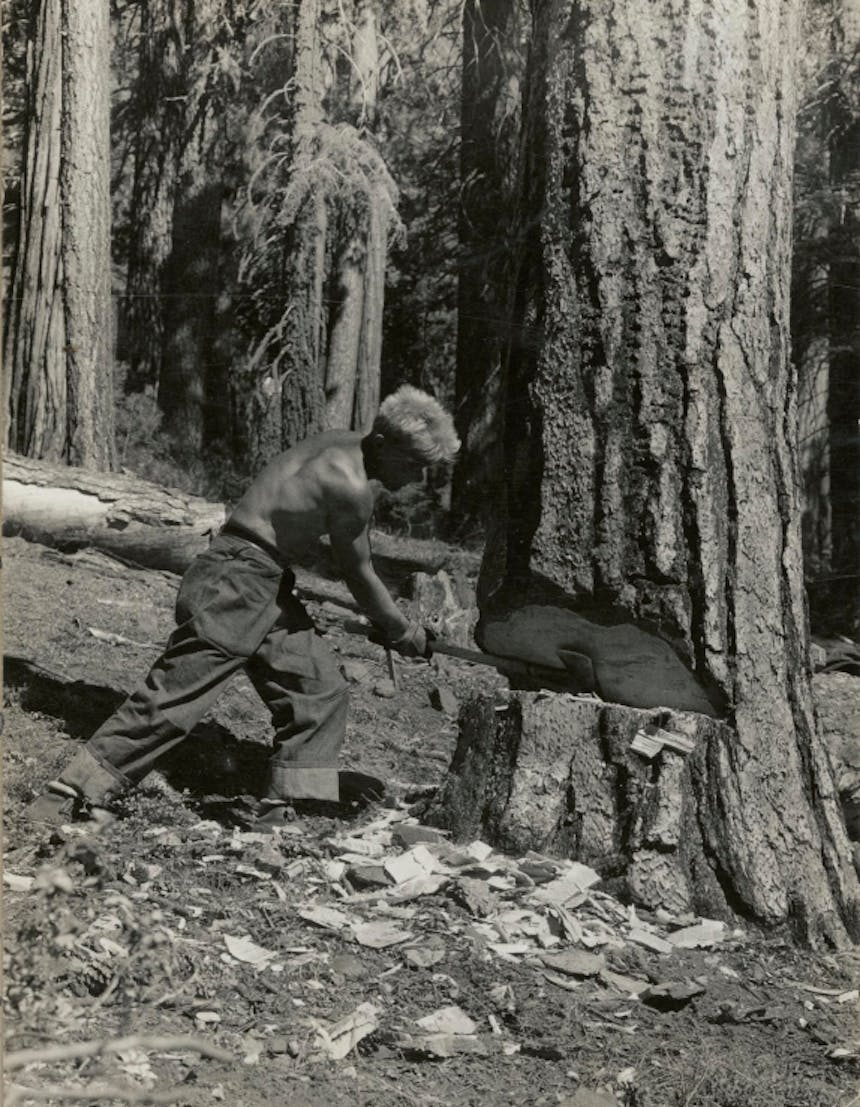
Colossal log jams were quickly broken up by Babe’s tail swinging back and forth. The two would stretch rivers and logging roads straight to help get timber to the sawmills. A water wagon they pulled tipped over and created the Mississippi River.
He was so large that it took five storks to deliver him to his parents and his first bed was a lumber wagon pulled by a team of horses. When he screamed for breakfast, he scared all of the fish out of the waters of local rivers. Within a week of his birth, he was wearing his father’s clothes, and he ate 10 barrels of porridge every two hours.
As he grew older and went into the timber industry, his feats became legendary. He could fell an acre of trees with one mighty swing of his ax. The Grand Canyon was formed when he dragged his ax behind him while walking. The 10,000 lakes in Minnesota result from water filling in his mighty footsteps after he had passed.
Teamed up with his trusty sidekick Babe, an ox he rescued during the worst-ever recorded winter, nothing seemed impossible. Colossal log jams were quickly broken up by Babe’s tail swinging back and forth. The two would stretch rivers and logging roads straight to help get timber to the sawmills. A water wagon they pulled tipped over and created the Mississippi River.
There are almost as many tall tales surrounding Bunyan as there are trees in the forest. Some are outlandish, while others are more nuanced. They inspire wonder, create smiles, and provide a moment of respite from the daily grind.
Nowadays, you can find hints of his legend everywhere – outdoorsmen wear flannel shirts like his, restaurant specials mention him, cartoons from Disney and others tell his tale. Spread across the United States, towering statues of him stare over the landscape. He is a part of the American consciousness.
One other area you can find his influence is in the movement to protect and rehabilitate the woods and forests of the country. Throughout the stories of Paul Bunyan resonates a deep love and respect for the wilderness he lived in. He loved the outdoors and wanted to live nowhere else. The city wouldn’t do for him or Babe. They were happiest under the stars at night or roaming the backwoods in search of adventure. Where he once represented a relentless drive to conquer nature, these days, his story is changing. He can work alongside other icons like Smokey the Bear and Johnny Appleseed.
Filson is teaming up with the National Forest Foundation to help the environment. A portion of every Paul Bunyan t-shirt sold will be donated to the NFF to help with their mission to promote the health and public enjoyment of America’s National Forests. Shop the Collection below.

